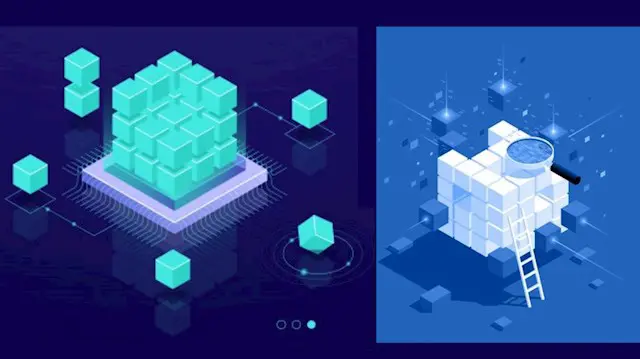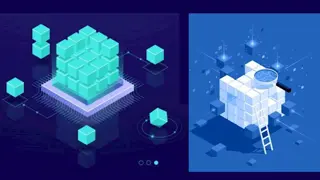
Data Engineering with Talend
Self-paced videos, Lifetime access, Study material, Certification prep, Technical support, Course Completion Certificate
Uplatz
Summary
- Certificate of completion - Free
- Reed courses certificate of completion - Free
Add to basket or enquire
Overview
Uplatz provides this comprehensive course on Talend, one of the leading cloud ETL/DW tools. It is a self-paced course with video lectures. You will be awarded Course Completion Certificate at the end of the course.
Talend is an open source software platform which offers data integration and data management solutions. Talend specializes in the big data integration. The tool provides features like a cloud, big data, enterprise application integration, data quality, and master data management. Talend is an ETL tool for Data Integration. Talend has a separate product for all these solutions. Talend is a code management tool for open source applications. It offers various data processing and data management software and services. Talend has a separate product for all these solutions.
Talend Product Portfolio
Talend Enterprise Big Data: a big data integration solution that extends Talend Open Studio for Big Data with teamwork and management features
Talend Platform for Big Data: a powerful and versatile big data integration and data quality solution that simplifies the loading, extraction and processing of large and diverse datasets so you can make more informed and timely decisions
Talend Open Studio for Data Integration: an open source application for data integration job design with a graphical development environment
Talend Enterprise Data Integration: extends Talend Open Studio for Data Integration with technical support and additional features
Talend Platform for Data Management: turn disparate, duplicate sources of data into trusted stores of consolidated information
Talend Platform for Data Services: a comprehensive unified data, application and service integration solution that lessens the impact of changing data structures while making the management of data across domains easier.
Talend Open Studio for MDM: a set of functions for master data management that provides functionality for integration, quality, governance, mastering and collaborating on enterprise data
Talend Platform for Master Data Management: turn disparate, inconsistent information across a business into a single, reliable “version of the truth”, providing increased confidence in decisions made
Talend Open Studio for Data Quality: an open source data profiling tool that examines the content, structure and quality of complex data structures
The Advantages of Talend
- Talend open studio cuts data handling time into half thus reducing developer rates.
- Talend open studio is highly efficient and reliable while working on large datasets. Moreover, functional error occurrence is much lesser when compared to manual ETL.
- Talend has a large community of users that can be utilized by the developers to locate any error during the development of the ETL job.
- It provides multiple open source integration tools free of cost to the users.
Main Features of the Talend
- Repository - is the collection of technical components used in a job. This panel is also called the “Heart of Talend Open Studio”. In this, metadata of databases, table schemas and structure can be created and stored.
- Design Workspace - Talend Studio’s next feature is the Design Workspace Window, here jobs can be designed and modeled with the help of a designer tab that shows the work graphically, and the code tab to detects possible errors and read the generated code.
- Component Palette - The next important feature in Talend open studio is Palette, which is used to contain the various components required to build a job. The component palette is used as a preconfigured connector to perform the specific data integration operation and it can also reduce the amount of hand-coding needed to work on multiple data.
Talend Course Learning Outcomes
- Get a thorough knowledge of ETL ideas as well as the capacity to address real-time business challenges with Talend
- Know how to use the Talend tool to automate all of your data integration, data analysis, and data warehousing needs
- Interaction with various types of sources or target platform like Flat Files (CSV, Fixed width), XML, Excel and work with Databases
- Understand real-time scenarios for Data Transformation, File & Error Handling, Talend Job Scheduling, and Automation/Parameterization
- Analyze the working knowledge of Big Data and Hadoop principles, as well as the advantages of combining Talend with Hadoop
- Talend provides easy connection and access to the Hadoop Ecosystem for integration, data analysis, and data warehousing applications.
- Get a thorough engagement of a SME throughout the Talend Training to understand industry standards and best practises
- Implementation of Talend with HDFS, Pig, and Hive (the most sought and futuristic abilities)
Curriculum
Course media
Description
Talend - Course Curriculum
Role of Open Source ETL Technologies in Big Data
- Overview on: TOS (Talend Open Studio) for Data Integration
- ETL concepts
- Data warehousing concepts
Talend - Introduction
- Why Talend?
- Features
- Advantages
- Talend Installation/System Requirements
- GUI layout (designer)
- Understanding it's Basic Features
- Comparison with other market leader tools in ETL domain
- Important areas in Talend Architecture: Project
- Workspace
- Job
- Metadata
- Propagation
- Linking components
Talend: Read & Write various Types of Source/Target System
- Data Source Connection
- File as Source
- Create meta data
- Database as source
- Create metadata
- Using MySQL database (create tables, Insert, Update Data from Talend)
- Read and write into excel files, into multiple tabs
- View data
- How to capture log and navigate around basic errors
- Role of tLogrow and how it makes developers life easy
Talend: How to Transform Your Business: Basic
- Using Advanced components like: tMap, tJoin, tFilter, tSortRow, tAggregateRow, tReplicate, tSplit, Lookup, tRowGenerator
Talend: How to Transform Your Business: Advanced 1
- Trigger (types) and Row Types
- Context Variables (parameterization)
- Functions (basic to advanced functions to transform business rules such as string, date, mathematical etc.)
- Accessing job level / component level information within the job
Talend: How to Transform Your Business: Advanced 2
- Type Casting (convert data types among source-target platforms)
- Looping components (like tLoop, tFor)
- tFileList
- tRunJob
- How to schedule and run talend DI jobs externally (not in GUI)
Working with Hierarchical File Structures
- Read and Write an XML file, configure the schema and XPath expression to parse an XML file
- Read and Write a JSON file, configure the schema and JSONPath expression to parse a JSON file
- Read and write delimited, fixed width files.
Context Variables and Global Variables
- Create context/global variables
- Use context/global variables in the configuration of Talend components
- Load context variables from a flow
Best practices
- Working with databases and implementing data warehousing concepts
- Working with files (excel, delimited, JSON, XML etc.)
Orchestration and Controlling Execution Flow
- Files - Use components to list, archive, and delete files from a directory
- Database – Controlling Commit and Rollback
- COMMIT at end of job/ every x number of rows
- Rollback on error
Shared DB connection across jobs and subjobs
- Use triggers to connect components and subJobs
- Orchestrate several jobs in master jobs.
- Handling Errors
- Kill a Job on a component error
- Implement a specific Job execution path on a component error
- Configure the log level in the console statement of accounts
Who is this course for?
Everyone
Requirements
Passion to learn and succeed!
Career path
- Talend Developer
- Talend ETL Developer
- Talend ETL Application
- Smartstream Technologies
- Delivery Manager
- Senior ETL Developer
- Consultant
- Talent ETL Application
- Talent Quality Engineer
- Lead Consultant
- Senior Engineer - Talend
- Talend Big-data Developer
- Talend Developer ETL Metholdology
- Senior Consultant
- Talend with cloud DB
- Talend Integration Developer
- Architect
- Talend Big Data Application Designer
Questions and answers
Currently there are no Q&As for this course. Be the first to ask a question.
Certificates
Certificate of completion
Digital certificate - Included
Course Completion Certificate by Uplatz
Reed courses certificate of completion
Digital certificate - Included
Will be downloadable when all lectures have been completed
Reviews
Currently there are no reviews for this course. Be the first to leave a review.
Legal information
This course is advertised on reed.co.uk by the Course Provider, whose terms and conditions apply. Purchases are made directly from the Course Provider, and as such, content and materials are supplied by the Course Provider directly. Reed is acting as agent and not reseller in relation to this course. Reed's only responsibility is to facilitate your payment for the course. It is your responsibility to review and agree to the Course Provider's terms and conditions and satisfy yourself as to the suitability of the course you intend to purchase. Reed will not have any responsibility for the content of the course and/or associated materials.


